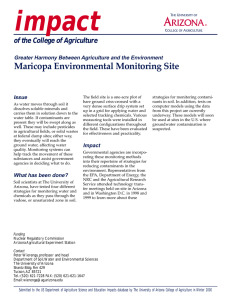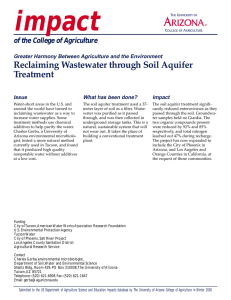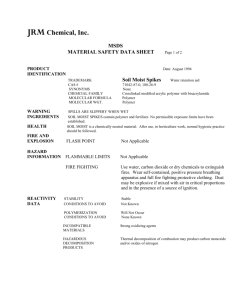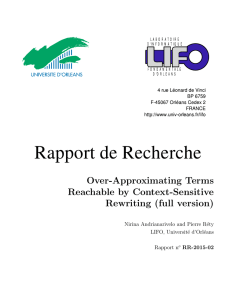Document 10669852
advertisement
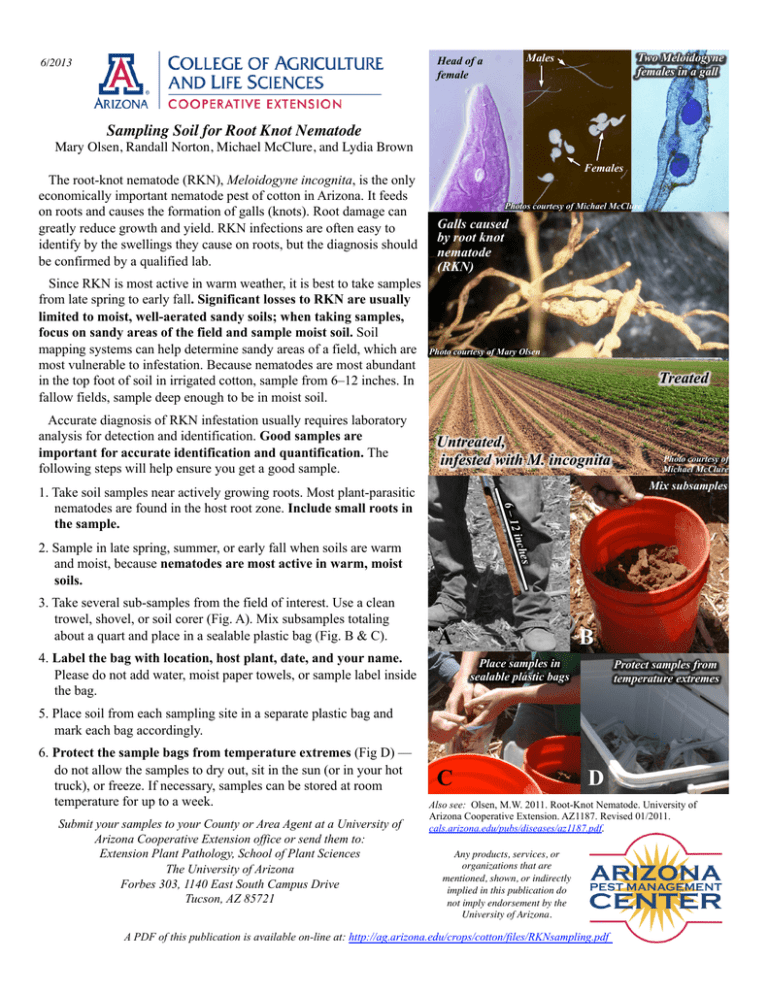
Two Meloidogyne females in a gall Males Head of a female 6/2013 Sampling Soil for Root Knot Nematode Mary Olsen, Randall Norton, Michael McClure, and Lydia Brown The root-knot nematode (RKN), Meloidogyne incognita, is the only economically important nematode pest of cotton in Arizona. It feeds on roots and causes the formation of galls (knots). Root damage can greatly reduce growth and yield. RKN infections are often easy to identify by the swellings they cause on roots, but the diagnosis should be confirmed by a qualified lab. Since RKN is most active in warm weather, it is best to take samples from late spring to early fall. Significant losses to RKN are usually limited to moist, well-aerated sandy soils; when taking samples, focus on sandy areas of the field and sample moist soil. Soil mapping systems can help determine sandy areas of a field, which are most vulnerable to infestation. Because nematodes are most abundant in the top foot of soil in irrigated cotton, sample from 6–12 inches. In fallow fields, sample deep enough to be in moist soil. Accurate diagnosis of RKN infestation usually requires laboratory analysis for detection and identification. Good samples are important for accurate identification and quantification. The following steps will help ensure you get a good sample. Females Photos courtesy of Michael McClure Galls caused by root knot nematode (RKN) Photo courtesy of Mary Olsen Treated Untreated, infested with M. incognita Mix subsamples 6–1 1. Take soil samples near actively growing roots. Most plant-parasitic nematodes are found in the host root zone. Include small roots in the sample. hes 2 inc 2. Sample in late spring, summer, or early fall when soils are warm and moist, because nematodes are most active in warm, moist soils. 3. Take several sub-samples from the field of interest. Use a clean trowel, shovel, or soil corer (Fig. A). Mix subsamples totaling about a quart and place in a sealable plastic bag (Fig. B & C). Photo courtesy of Michael McClure A 4. Label the bag with location, host plant, date, and your name. Please do not add water, moist paper towels, or sample label inside the bag. B Place samples in sealable plastic bags Protect samples from temperature extremes 5. Place soil from each sampling site in a separate plastic bag and mark each bag accordingly. 6. Protect the sample bags from temperature extremes (Fig D) — do not allow the samples to dry out, sit in the sun (or in your hot truck), or freeze. If necessary, samples can be stored at room temperature for up to a week. Submit your samples to your County or Area Agent at a University of Arizona Cooperative Extension office or send them to: Extension Plant Pathology, School of Plant Sciences The University of Arizona Forbes 303, 1140 East South Campus Drive Tucson, AZ 85721 C D Also see: Olsen, M.W. 2011. Root-Knot Nematode. University of Arizona Cooperative Extension. AZ1187. Revised 01/2011. cals.arizona.edu/pubs/diseases/az1187.pdf. Any products, services, or organizations that are mentioned, shown, or indirectly implied in this publication do not imply endorsement by the University of Arizona. A PDF of this publication is available on-line at: http://ag.arizona.edu/crops/cotton/files/RKNsampling.pdf
